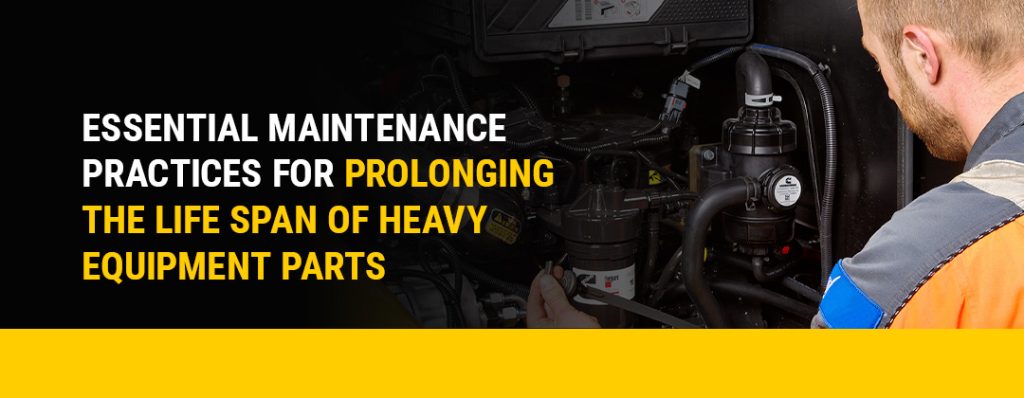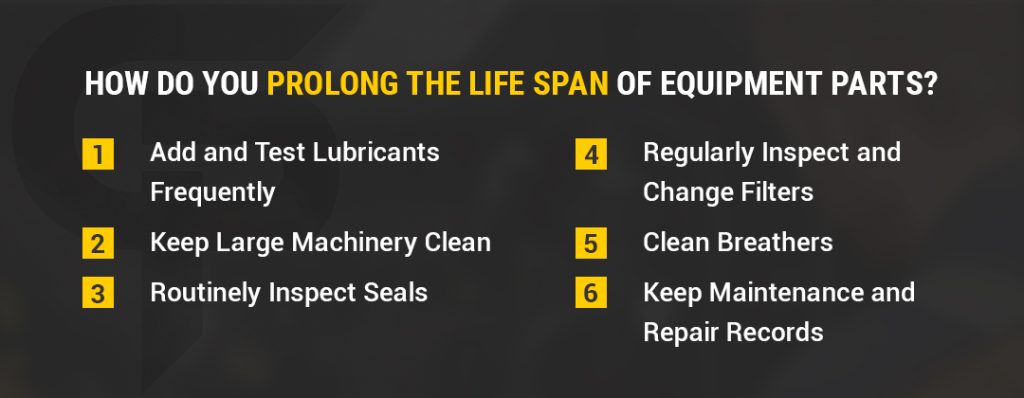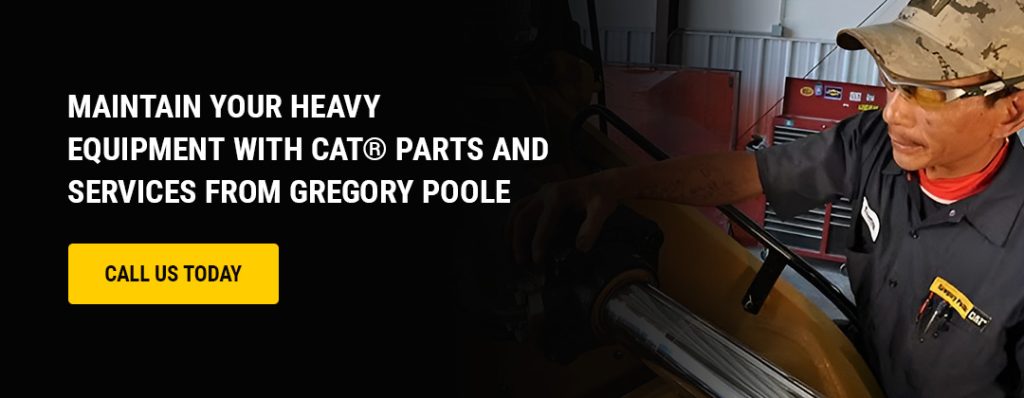
Heavy equipment maintenance involves measures to detect, address and prevent issues in your machinery. It can provide numerous benefits for your fleet.
This guide will cover some heavy equipment maintenance tips to help you reap the above benefits.
Here are some essential maintenance tips to achieve optimal performance and reliability from your heavy machinery parts.
Heavy machinery relies on a quality lubricant to function correctly. A lubricant reduces friction around moving parts, decreasing wear and tear and the risk of premature damage. It also prevents soot from accumulating within the machine’s interior.
Regularly adding and testing lubricant can do wonders for your equipment’s performance and longevity. Here are some lubrication maintenance tips to remember.
Elements like seals, filters, vents and cooling fans are prone to debris buildup, like dust, grease and soot. These substances can block moving parts and damage the engine over time. The more heavy equipment parts become clogged with dirt and grime, the higher the risk of an expensive breakdown. Thoroughly cleaning your machines is a must to maintain performance.
Carefully inspect each equipment component to identify any areas with significant debris buildup. A pressure washer is usually the best tool to remove dirt, grease and other contaminants.

Industrial seals are critical equipment components that regulate pressure, resist part contamination and control leakage. However, seals can gradually dry out and crack, causing leaks and other performance issues. Here are a few pivotal tips for maintaining your seals.
Over time, diesel fuel in heavy equipment can accumulate insoluble particulates and sludge. These pollutants can build up in injectors and clog fuel filters, reducing engine efficiency. As a result, the machine burns more fuel and works harder to operate, potentially leading to premature part failures.
Routine filter fuel inspections and changes are crucial to avoid unnecessary shutdowns and servicing. Depending on your equipment’s surrounding climate and the fuel’s cleanliness, you should swap out your fuel filters every 200 to 250 hours. At the very least, you should replace the filter once a year.
Remember to replace your filter each time you change the hydraulic fuel. Filter screens require changing at the same time as filters.
Breathers are multi-tiered devices that eliminate various contaminants — like moisture and dirt — from the air entering the machine’s components. As oil levels and temperatures fluctuate, parts such as pumps, reservoirs, stumps and gearboxes essentially “breathe” when the air in the headspace contracts and expands.
Each time the equipment breathes, moisture and dirt particles enter the system, diminishing the lubricant and equipment over time. Cleaning breathers form a vacuum in the cab that sucks in contaminants. These particles can damage electronics in the cab, affecting the clutch and other elements.
Therefore, cleaning your equipment’s breathers is vital to prevent system degradation. Additionally, be sure to replace breather caps periodically, at least once annually.
A consistent maintenance schedule can help you stay on top of equipment care and avoid costly operational issues. Rather than only performing maintenance when there’s a problem, you can factor proactive upkeep into your business’ schedule. That way, your entire team is up to date on:
You can use the manufacturer’s recommendations to build a scheduled maintenance program. Be sure to keep detailed records of your maintenance measures. Recordkeeping can be as simple as documenting inspections, replacements and repairs on a spreadsheet or using advanced preventive maintenance software.

Investing in durable parts is essential for heavy equipment maintenance. In addition to our vast selection of new, used and rental equipment, we have high-quality Cat® parts available at Gregory Poole Equipment Company.
Also, we offer excellent service support for Cat equipment to enhance performance and fuel efficiency. We offer service options for many industries, from mining and forestry to construction and government. Our team provides emergency repair services, responding quickly to your urgent equipment needs.
As a one-stop shop for all your heavy equipment requirements, we can deliver the solutions you need to keep your fleet reliable for years. Contact us today with any questions about our heavy equipment parts and services.